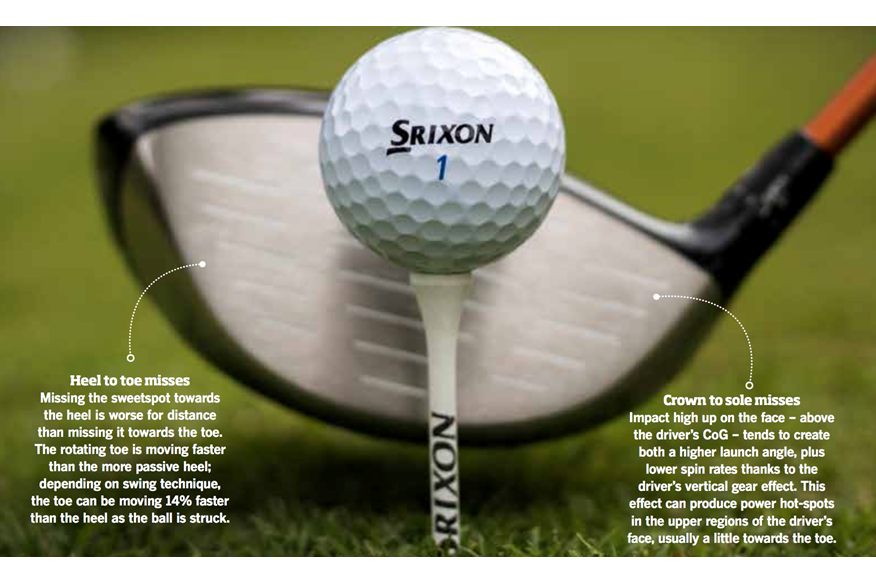The science of the smash factor
Last updated:
Smash Factor is one of golf’s buzz-phrases. So what is it, and how do you up yours?
Is there a better feeling in golf that ripping a drive right down the middle? When everything comes together – aim, swing plane, impact zone, finish – it yields long, soaring shots that we admire as they fly. And one number in particular is crucial to achieving this more often; Smash Factor.
You may have heard commentators talk about it on TV. If you’ve ever been fitted for a set of clubs you’ve certainly heard of it. But what is it? Why is it so important? And how can you increase yours?
Put simply, Smash Factor is the ratio of ball speed to clubhead speed on a given shot – in other words, a measure of the efficiency of impact. Limitations placed by physics and the rules on club and ball design have given smash factor a nominal upper limit of 1.5 (15 players on the PGA Tour currently hit this, or slightly above) – in other words, in a perfect world a 100mph impact clubhead speed would produce a 150mph ball speed.
But why does that matter to you and me? Well, as a measurable figure it is the proof that quality-of-strike can override clubhead speed when it comes to distance. With better Smash, your driving distance can go up, even when your swing slows down. Smash Factor shows the bene t of hitting better over hitting harder. And that, in theory, should stop us lashing at the ball.
“Smash Factor is important as it helps you ensure that every drop of effort you put into hitting the ball is being converted into distance,” says club- fitting specialist Jason MacNiven of fitting specialist Golf Principles.
“As far as distance goes, it’s not the only god – in fact there is a perfect triangle of smash factor, spin rate and launch angle – but working on it certainly plays a valuable part in helping you become a better driver.“
According to MacNiven, the average club golfer has a Smash Factor somewhere in the region of 1.35-1.4. And as you might expect, getting that figure up has much to do with nding the driver’s sweetspot.
“In the most technical definition, the sweetspot is the actual point of balance inside the clubhead that we refer to as the centre of gravity,” says American club- fitting expert Tom Wishon. If you hit the ball so the centre of the ball is directly in line with the clubhead’s centre of gravity (CoG), there will be no loss of energy in the shot.”
So far so good. But here comes the bad news. “The centre of gravity is a single point about the same size as the full stop at the end of this sentence,” Wishon adds. “When impact occurs such that the centre of the ball is not in line with the clubhead’s CoG, energy is lost, as does distance.”

Two ways to boost YOUR Smash Factor
Shaft length
Based on 10 years of custom- fitting feedback, US club- fitting legend Tom Wishon believes that for golfers with a handicap between 10 and 26, over 75% will hit the ball longer and straighter and more on-centre with a shorter length driver than what the golf companies are selling off the shelf.
Total weight and swingweight
All clubs sold off the rack are made to one standard total weight and one standard swingweight. It is very possible that many, many golfers are using clubs in which the total weight and/or swingweight do not match their inherent swing tempo. From that, they don’t “time” shots for maximum efficiency and/or lose valuable speed.


